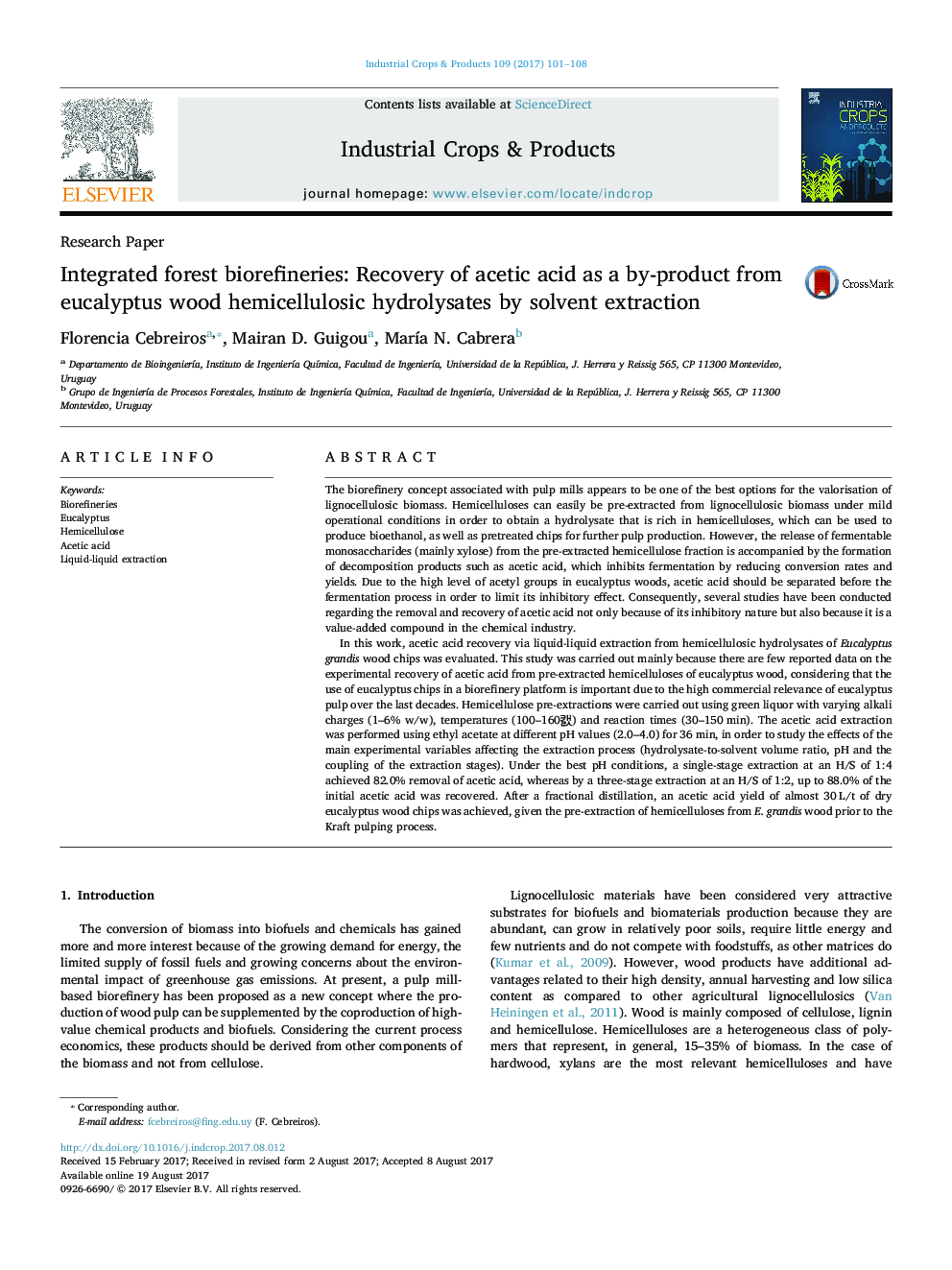| کد مقاله | کد نشریه | سال انتشار | مقاله انگلیسی | نسخه تمام متن |
|---|---|---|---|---|
| 5761729 | 1624801 | 2017 | 8 صفحه PDF | دانلود رایگان |
- Eucalyptus pre-extracted hydrolysates contain high levels of acetic acid.
- Acetic acid was effectively recovered from hydrolysates by ethyl acetate extraction.
- Multi-stage extraction processes can achieve high acetic acid extraction (>85%).
The biorefinery concept associated with pulp mills appears to be one of the best options for the valorisation of lignocellulosic biomass. Hemicelluloses can easily be pre-extracted from lignocellulosic biomass under mild operational conditions in order to obtain a hydrolysate that is rich in hemicelluloses, which can be used to produce bioethanol, as well as pretreated chips for further pulp production. However, the release of fermentable monosaccharides (mainly xylose) from the pre-extracted hemicellulose fraction is accompanied by the formation of decomposition products such as acetic acid, which inhibits fermentation by reducing conversion rates and yields. Due to the high level of acetyl groups in eucalyptus woods, acetic acid should be separated before the fermentation process in order to limit its inhibitory effect. Consequently, several studies have been conducted regarding the removal and recovery of acetic acid not only because of its inhibitory nature but also because it is a value-added compound in the chemical industry.In this work, acetic acid recovery via liquid-liquid extraction from hemicellulosic hydrolysates of Eucalyptus grandis wood chips was evaluated. This study was carried out mainly because there are few reported data on the experimental recovery of acetic acid from pre-extracted hemicelluloses of eucalyptus wood, considering that the use of eucalyptus chips in a biorefinery platform is important due to the high commercial relevance of eucalyptus pulp over the last decades. Hemicellulose pre-extractions were carried out using green liquor with varying alkali charges (1-6% w/w), temperatures (100-160) and reaction times (30-150Â min). The acetic acid extraction was performed using ethyl acetate at different pH values (2.0-4.0) for 36Â min, in order to study the effects of the main experimental variables affecting the extraction process (hydrolysate-to-solvent volume ratio, pH and the coupling of the extraction stages). Under the best pH conditions, a single-stage extraction at an H/S of 1:4 achieved 82.0% removal of acetic acid, whereas by a three-stage extraction at an H/S of 1:2, up to 88.0% of the initial acetic acid was recovered. After a fractional distillation, an acetic acid yield of almost 30Â L/t of dry eucalyptus wood chips was achieved, given the pre-extraction of hemicelluloses from E. grandis wood prior to the Kraft pulping process.
Journal: Industrial Crops and Products - Volume 109, 15 December 2017, Pages 101-108
